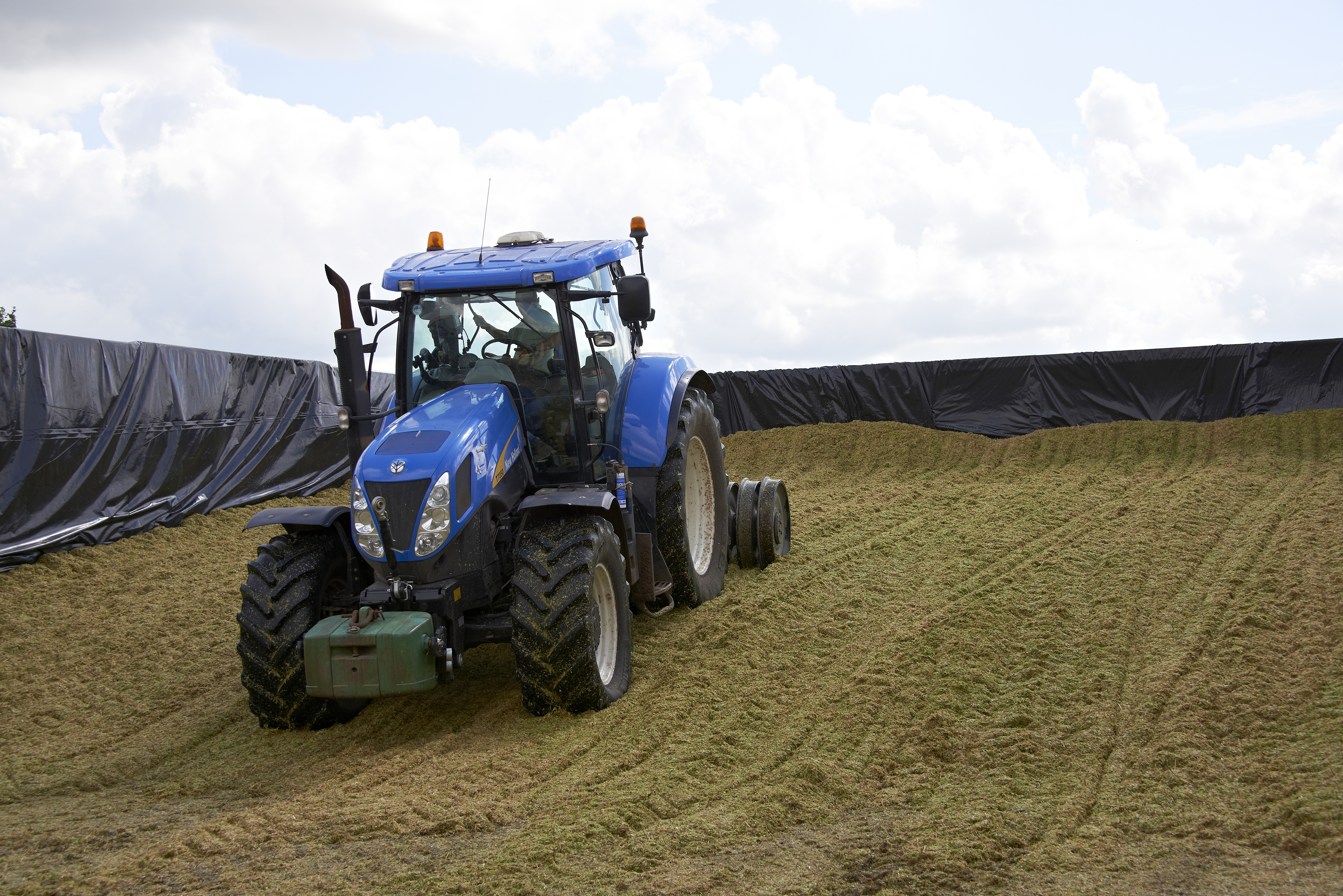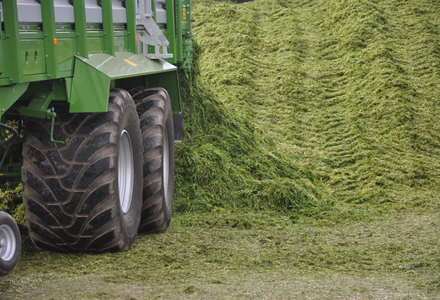What is the best way to fill the clamp?
The Dorest Wedge

The Dorset Wedge has been the traditional method used. Use as steep a ramp as possible as this maximises the effectiveness of rolling. This system minimises exposure to air during filling and avoids exposing earlier cuts to air again when the clamp is opened to put in the next cut. 
More recently horizontal layering has been introduced as an alternative.
Layering
Potential benefits of layering:
- Better compaction as the crop is spread thinner over a larger surface area
- More room for two machines on the clamp – important if the forage is coming in fast
- Easier to roll a flatter surface
- No risk of clamp slippage with wet crops or between cuts
- More consistent forage quality as you move through the clamp
Potential disadvantage of layering:
- Bigger surface area exposed to air during filling which could increase respiration DM losses
- To put in another cut you need to unsheet the whole clamp – could increase DM losses
- It may take longer to fill the clamp if only one machine on it as bigger surface area to roll
Whichever method is used, as the clamp is filled keep the sides higher than the middle. This ensures the silage next to the walls can be rolled properly.
If a clamp is opened to put in another cut, put a layer of fresh forage on top before rolling commences. Running tractor wheels over silage that has already stabilised has the effect of aerating this material, causing aerobic spoilage. This will result in a line of poor silage across the clamp.

